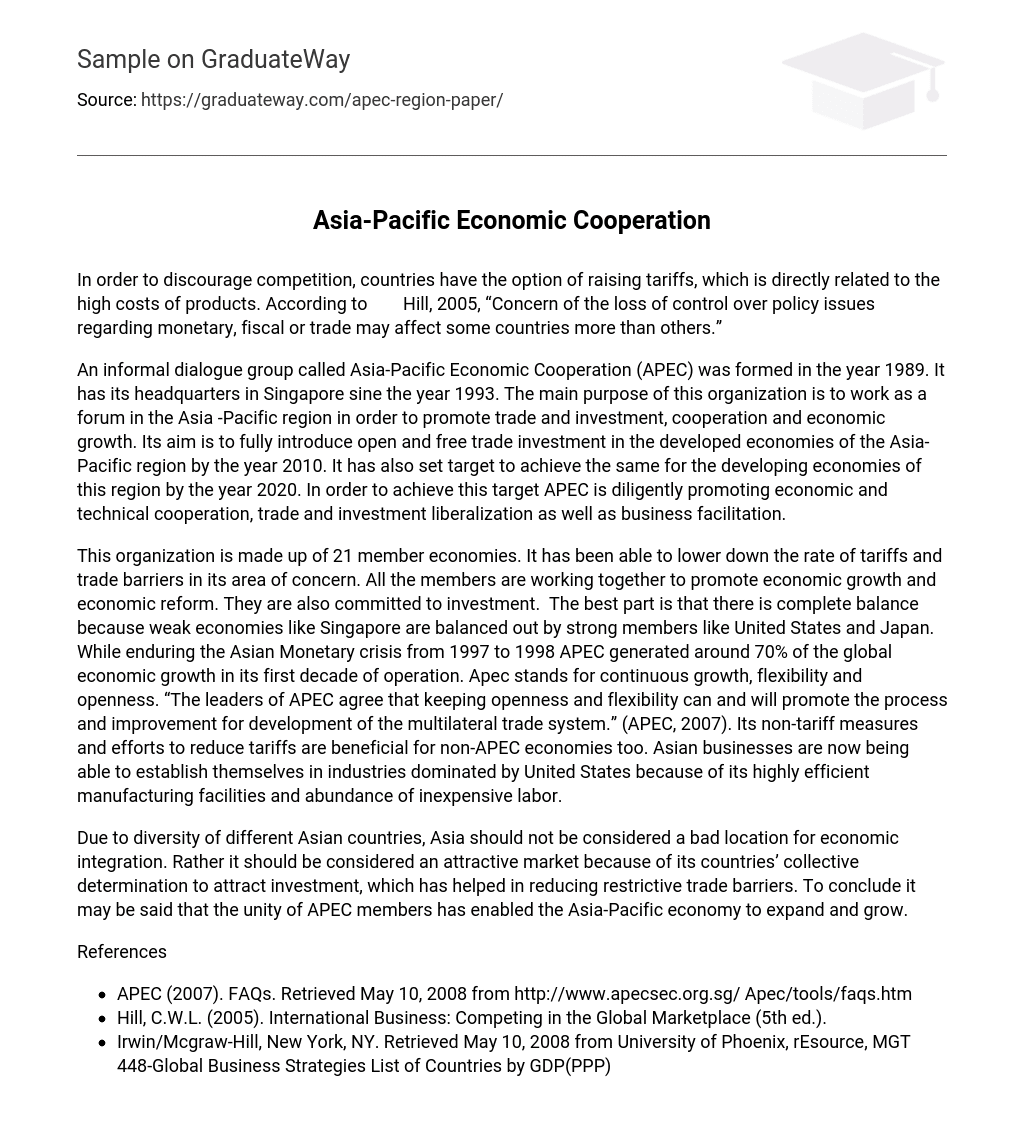In order to discourage competition, countries have the option of raising tariffs, which is directly related to the high costs of products. According to Hill, 2005, “Concern of the loss of control over policy issues regarding monetary, fiscal or trade may affect some countries more than others.”
An informal dialogue group called Asia-Pacific Economic Cooperation (APEC) was formed in the year 1989. It has its headquarters in Singapore sine the year 1993. The main purpose of this organization is to work as a forum in the Asia -Pacific region in order to promote trade and investment, cooperation and economic growth. Its aim is to fully introduce open and free trade investment in the developed economies of the Asia- Pacific region by the year 2010. It has also set target to achieve the same for the developing economies of this region by the year 2020. In order to achieve this target APEC is diligently promoting economic and technical cooperation, trade and investment liberalization as well as business facilitation.
This organization is made up of 21 member economies. It has been able to lower down the rate of tariffs and trade barriers in its area of concern. All the members are working together to promote economic growth and economic reform. They are also committed to investment. The best part is that there is complete balance because weak economies like Singapore are balanced out by strong members like United States and Japan. While enduring the Asian Monetary crisis from 1997 to 1998 APEC generated around 70% of the global economic growth in its first decade of operation. Apec stands for continuous growth, flexibility and openness. “The leaders of APEC agree that keeping openness and flexibility can and will promote the process and improvement for development of the multilateral trade system.” (APEC, 2007). Its non-tariff measures and efforts to reduce tariffs are beneficial for non-APEC economies too. Asian businesses are now being able to establish themselves in industries dominated by United States because of its highly efficient manufacturing facilities and abundance of inexpensive labor.
Due to diversity of different Asian countries, Asia should not be considered a bad location for economic integration. Rather it should be considered an attractive market because of its countries’ collective determination to attract investment, which has helped in reducing restrictive trade barriers. To conclude it may be said that the unity of APEC members has enabled the Asia-Pacific economy to expand and grow.
References
- APEC (2007). FAQs. Retrieved May 10, 2008 from http://www.apecsec.org.sg/ Apec/tools/faqs.htm
- Hill, C.W.L. (2005). International Business: Competing in the Global Marketplace (5th ed.).
- Irwin/Mcgraw-Hill, New York, NY. Retrieved May 10, 2008 from University of Phoenix, rEsource, MGT 448-Global Business Strategies List of Countries by GDP(PPP)





